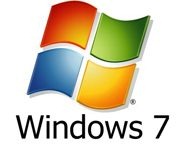Frequently Asked Questions: Virtual Hard Disks in Windows 7
This article provides answers to common questions about Virtual Hard Disks in Windows 7.
Questions related to VHD file types
Questions related to native VHD boot
Questions related to backup support for volumes in attached VHDs
Questions related to VHD file types
What are the different VHD file types?
There are three types of VHD files. You can create these files using the Hyper-V Manager or (in Windows 7) using the Windows disk-management tools:
- Fixed VHD. A fixed VHD is a file with an allocated size that does not change. For example, if you create a VHD that is 2 gigabytes (GB), the system will create a file that is approximately 2 GB (with some space used for internal VHD structure) and the file will be 2 GB regardless of the data written to it.
- Dynamic or expandable VHD. A dynamic or expandable VHD is a file that is as large as the data written to it at any given time. As more data is written, the file dynamically increases in size. For example, the size of a file for a 2 GB dynamic VHD is initially around 2 megabytes (MB) on the host file system. As data is written to the VHD, the file grows with a maximum size of 2 GB.
- Differencing VHD. A differencing VHD is similar to a dynamic VHD, but contains only the modified disk blocks of an associated parent VHD. A differencing VHD is linked to a parent VHD and is sometimes referred to as a “child” VHD. The parent VHD file is read-only and therefore you must modify the differencing disk. The file type of the parent VHD can be any of the three VHD types, including another differencing VHD. Multiple child VHD files create a differencing chain.
